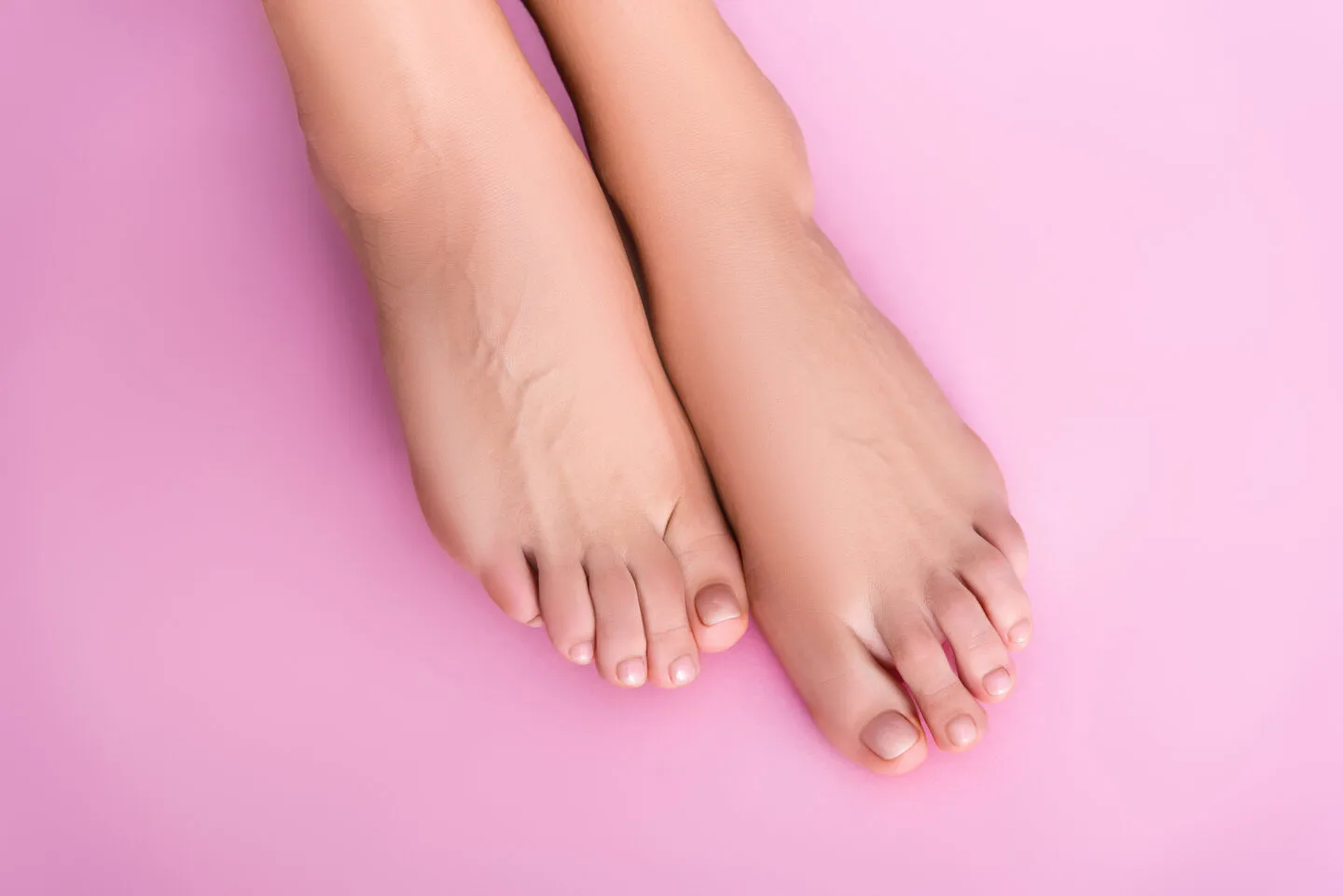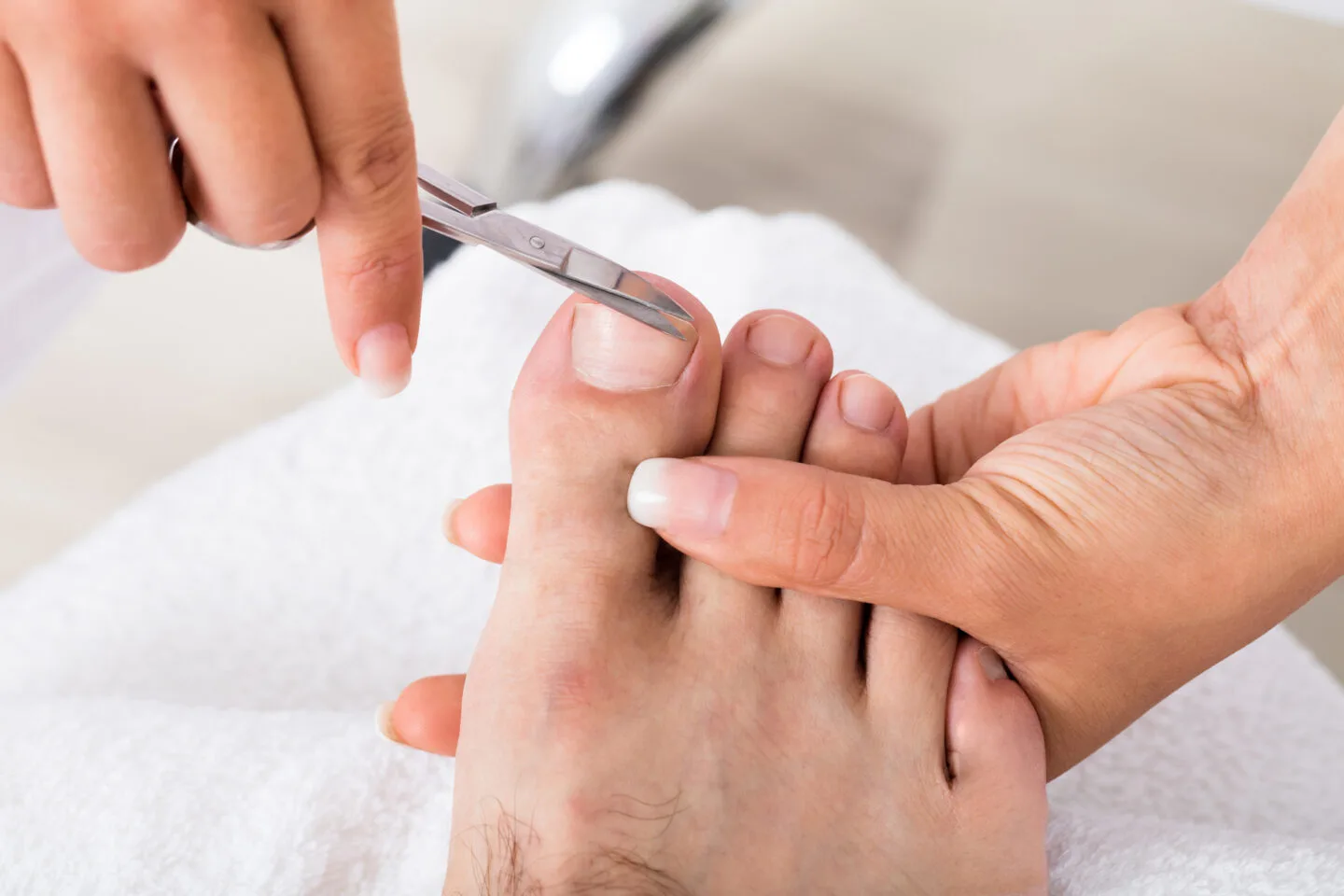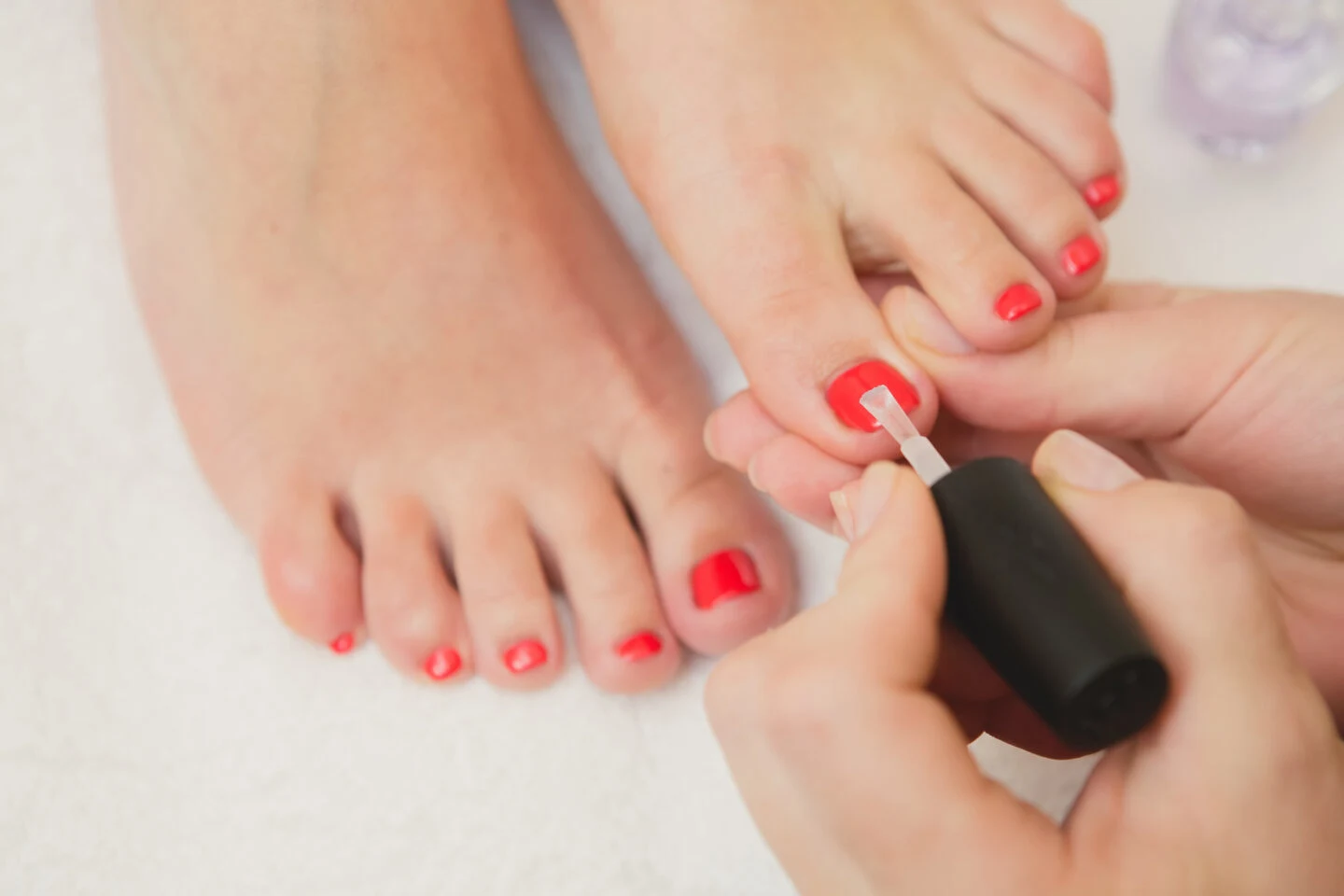Having toenails that grow in a straight line can greatly improve the appearance of your feet. Not only does it make them look neat and tidy, but it helps prevent ingrown toenails.
Unfortunately, achieving this perfect alignment is easier said than done. Fortunately, there are several solutions to how to get toenails to grow straight, so keep on reading to find out all about them.

What Factors Influence The Health Of Our Toenails?
The health of our toenails is a reflection of our overall health. Just like the other parts of our body, our toenails are liable to different factors that can influence its health.
Some of the most significant factors that can affect the health of toenails are diet, hygiene habits, medical conditions, and lifestyle choices.
Eating a balanced and healthy diet is the first step to ensuring healthy toenails.
Eating an adequate amount of protein, calcium, and vitamins is essential for promoting nail health.
Besides dietary patterns, personal hygiene habits are extremely important for preventing nail infections and other issues that can put our nails at risk.
Any medical conditions such as circulatory issues, diabetes, etc. can influence nail health over time.
Lifestyle choices such as regularly wearing shoes or socks that don’t properly fit the feet, or using harsh chemicals or cleaning agents, can cause damage to our nails.
So, it is important to be mindful of these factors to ensure our nails stay healthy.
How Fast Do Toenails Grow?
Toenails are one of the fastest growing parts of the body. On average, healthy toenails grow about one-eighth of an inch per month, or about one and a half inches per year.
It is important to note that toenails grow much slower than fingernails, which can grow up to three times faster.
As we age, our toenails naturally become thicker and may not grow as fast as they did when we were younger.
Nails are made of a protein called keratin that is found in the outer layers of our skin.
This keratin becomes harder and more resistant to splitting, causing the nails to take longer to grow.
Other factors affecting nail growth include health issues, genetics, and diet. Nutritional deficiencies can impede nails from growing at the normal rate of one-eighth of an inch per month.
Toenail growth can be affected by the environment as well; if you constantly keep them wet, for example, the nails may become brittle and slow down in growth.
Other things that can impede nail growth include wearing tight shoes, fungal infections, or engaging in certain activities such as running or climbing that may cause stress and damage to the toenails.
Overall, it is important to maintain good hygiene and a nutritious diet in order to ensure that your toenails stay healthy and grow at their natural rate.
If you notice any changes in the rate of your nail growth, you should consult a doctor to determine what is causing it.
What Is An Ingrown Toenail?
An ingrown toenail is a common condition that occurs when the corners or sides of the toenail grow into the skin adjacent to it. It’s known as onychocryptosis, which translates to “hidden nail.”
It’s most common in the big toe, but can occur with any toe. The condition is often caused by improper trimming or cutting of the toenail, or putting on shoes that are too tight or have a narrow toe box.
Ingrown toenails can be caused by trauma, such as stubbing your toe, or from genetics.
Some people are more prone to developing ingrown toenails than others. Symptoms of an ingrown toenail include redness, swelling, pain, and in some cases, infection.
If the toenail has already pierced the skin, you may see signs of pus or drainage around the area.
Treatment for an ingrown toenail can range from soaking the toe in warm water and Epsom salts several times a day to wearing a shoe with a wider toe box, to partial or complete removal of the toenail. In severe cases, surgery may be necessary.
Taking care when trimming your toenails and wearing comfortable shoes that fit properly may help to prevent ingrown toenails.

What Causes An Ingrown Toenail?
An ingrown toenail is a painful condition caused by the nail growing into the flesh of the toe. It usually occurs when nails are not trimmed properly, resulting in the edges of the toenail that can curl and dig into skin.
Certain footwear such as shoes that are too tight or have pointed toes can lead to an ingrown toenail.
Wearing socks and shoes for long periods of time may increase moisture on the feet, making them more likely to be infected if there is an ingrown toenail present.
People with diabetes or who suffer from poor circulation cardiocascular disease may develop an ingrown nail more easily due to persistent risk of foot injury.
As mentioned above, the best way to treat an ingrown toenail is prevention; keeping nails short and trimming straightly across will reduce risk factors overall.
Can You Fix An Ingrown Toenail Without Removal?
Yes, it is possible to fix an ingrown toenail without removal. An ingrown toenail occurs when either the side or the end of the nail begins to grow inside the skin, resulting in pain, swelling, and sometimes infection.
There are several treatment options for fixing an ingrown toenail without removal.
These include taking medication to reduce inflammation and alleviate pain, soaking the affected area in warm, soapy water a few times a day.
Wearing comfortable and properly fitting shoes that have plenty of room for your toes, and elevating your feet whenever possible.
You can gently lift the edges of the nail with a cotton swab or cotton ball, and place a small piece of cotton underneath it to keep it from curling into the skin.
These treatments should be done regularly until the nail has grown out in the correct position.
In rare cases, if these treatment methods don’t work, it may be necessary to have the ingrown toenail removed via a medical professional.
What Can You Do To Prevent Ingrown Toenails?
If left untreated, they can lead to other complications and even result in infection. To prevent ingrown toenails, it is important to wear shoes that fit well and are not too tight around the toes.
When trimming your toenails, be sure to cut them straight across and not too short.
You should never try to dig out an ingrown toenail yourself. It is best to contact a doctor, who can remove any ingrown edges and provide advice on caring for the toenail.
An avoidance of heavy activities that can put extra pressure on the toes is recommended.
Soaking your feet in warm water with Epsom salt can help prevent and manage ingrown toenails.
It’s a good idea to keep avoiding tight-fitting shoes, trimming nails straight across, and seeing a doctor if an ingrown toenail occurs are important steps for prevention.
What Causes Curved Toenails?
Curved toenails are a common issue for many people, but what causes them? Curved toenails can be caused by several different factors, such as wearing tight or narrow shoes, nail trauma, or a fungal infection.
Wearing tight or narrow shoes can cause your toes to be pushed together, forcing them to bend and cause the toenails to curve.
Nail trauma can cause curved toenails; when nails are injured, they can become deformed and grow abnormally.
When the nail bed is damaged, it can lead to distorted nail growth. Finally, fungal infections can cause curved nails.
Fungal infections cause the nail to become weak and brittle and can cause the shape of the nail to change.
Treating the fungal infection is the best way to get rid of a curved toenail. In some cases, however, curved toenails may be natural and require no treatment.
How to Get Toenails to Grow Straight?
Toenail health is important for overall foot and toe health, but sometimes it can be difficult to get toenails to grow straight.
If your toenails are growing inwards, it is important to first determine what is causing the problem.
It could be a fungus, or it could be due to wearing too tight shoes, or due to an injury. Generally, keeping your toes dry and wearing proper fitting shoes can help promote healthy toenails.
You should avoid cutting your nails too short, as this can cause them to curl inwards.
At home, using a cuticle stick to push the edges of the nail slightly outward at the base can help encourage growth of the entire nail in the right direction.
Proper nutrition is essential for healthy toenail growth, as is looking for signs of infection.
Be sure to eat a balanced diet and take a multi-vitamin containing iron, zinc, biotin and folic acid to help promote healthy growth.

Curved toenails can be caused by wearing tight or narrow shoes, nail trauma, and fungal infections.
To keep your toenails healthy and growing straight, wear proper fitting shoes, use a cuticle stick to push the edges of the nail slightly outward at the base, and eat a balanced diet with essential vitamins such as iron, zinc, biotin, and folic acid.
If you are suffering from curved toenails, it is important to seek medical attention as soon as possible in order to avoid infection and further damage.
Finally, regular filing of the nails with a pumice stone or foot file is also important for overall foot health.

Hi, my name is Gemma, and I’m the owner of MakeupMuddle.com. I’m a true beauty obsessive, and love writing about anything to do with beauty – I have been a beauty writer since 2012.
